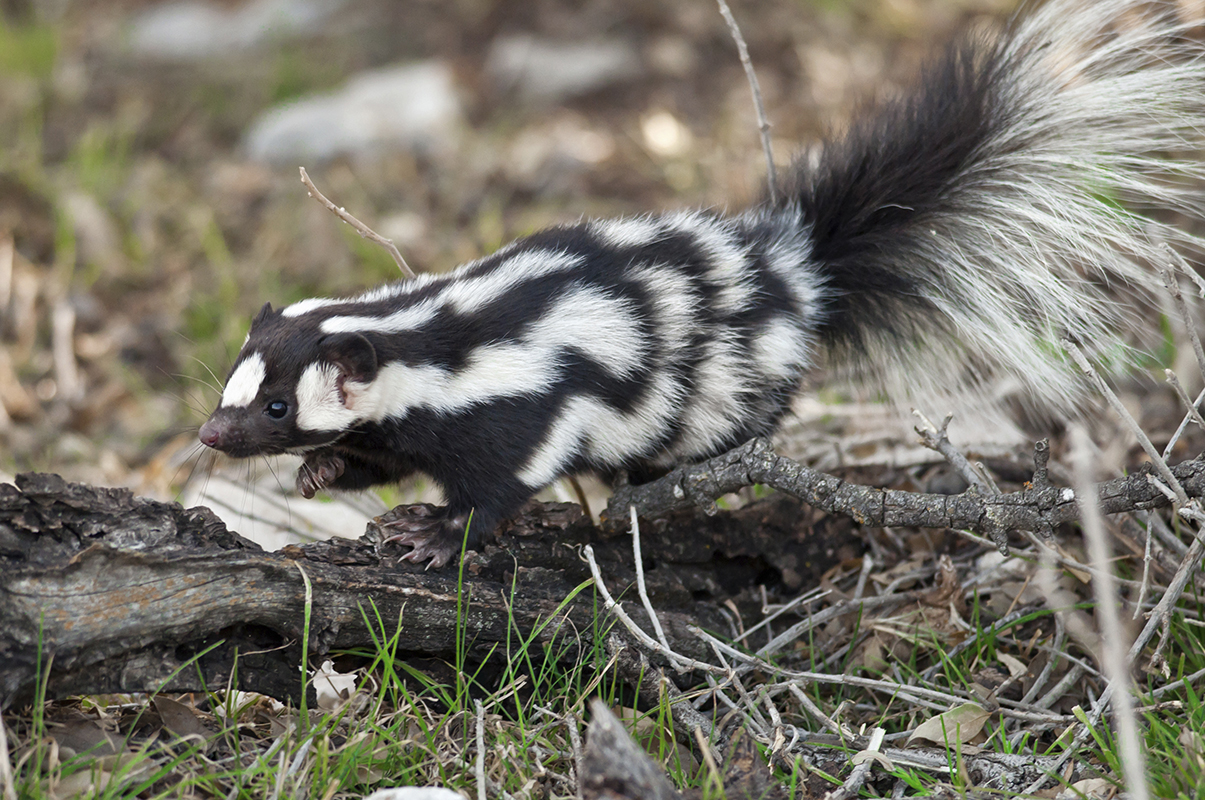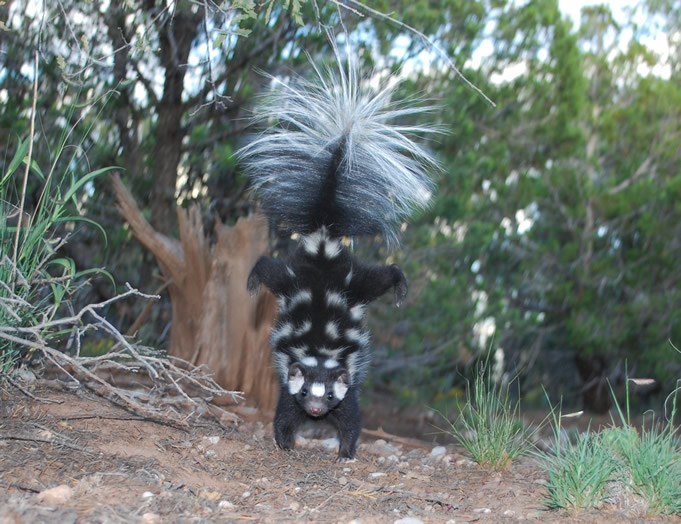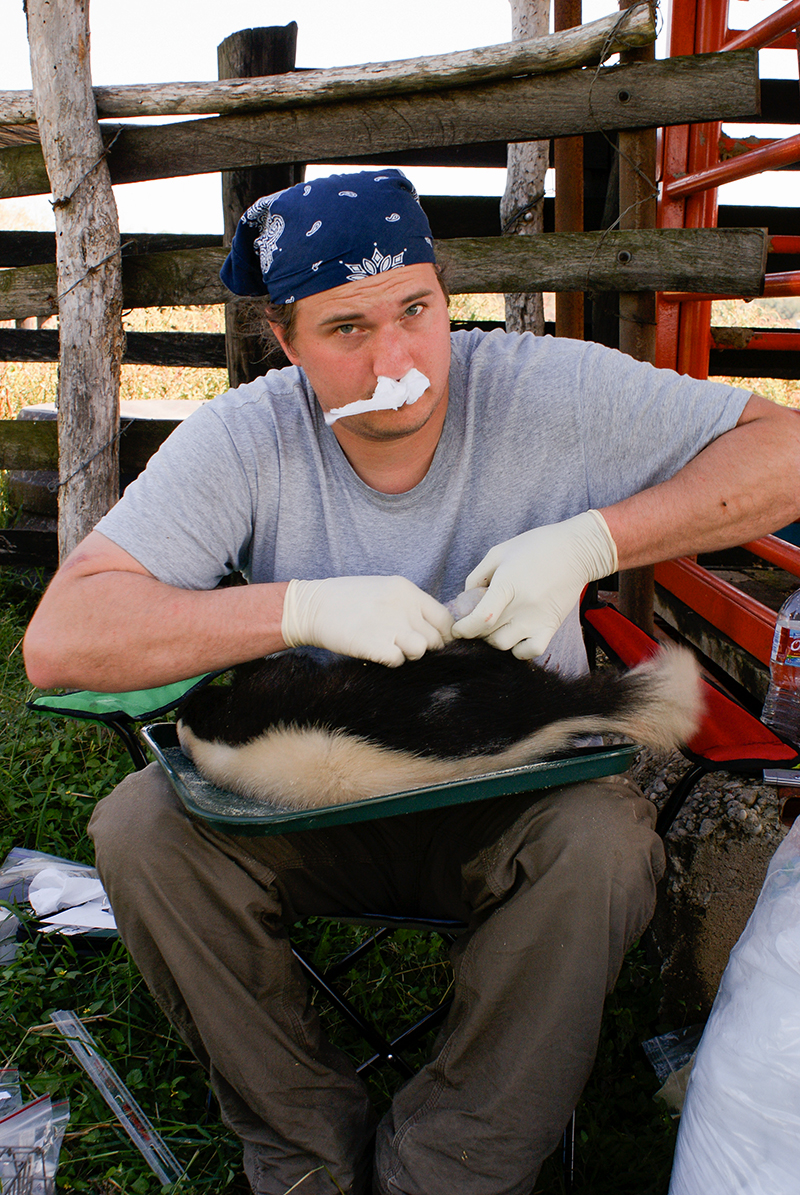Handstanding Skunks' DNA Shaped by Ancient Climate Change

Western spotted skunks — striped skunks' smaller cousins that stand on their "hands" to blast their smelly defensive spray — are helping scientists piece together a picture of how ancient climate change shaped animal populations millions of years ago, and could provide clues for how present climate change may affect animals alive today.
These endearing and widely distributed skunks have been around for about 1 million years and live in a range of habitats across western North America. But even though the skunks all belong to one species, Spilogale gracilis, genetic differences divide them into three distinct groups that are known as clades, and scientists have puzzled over what might have driven these changes in the skunks' DNA. [The 12 Weirdest Animal Discoveries]
Researchers investigating these adorable little stinkers recently discovered the likely scenario that led to these genetic divisions — ancient climate change during the Pleistocene ice age, as glaciers divided skunk populations into habitats isolated from each other.
Unlike the bold bands of white fur lining the black backs of striped skunks, western spotted skunks' markings curve and twine like the walls of a maze, with a single large spot marking the center of their heads. They are the smallest of the North American skunks, with males measuring about 16 inches (41 centimeters) in length and weighing about 22 ounces (630 grams), according to a species description by the Montana Natural Heritage Program and Montana Fish, Wildlife and Parks.

Because their distribution is so broad — from British Columbia to northern Mexico, and from California to the central Great Plains — groups of skunks could potentially be separated from each other by many natural geographical barriers, such are rivers and mountain ranges. Scientists wanted to know whether geography could explain how skunk populations separated from each other and evolved unique genetic signatures, or if other land-shaping factors might have played a part, study lead author Adam Ferguson, collection manager of mammals at the Field Museum of Natural History, told Live Science.
"We were interested in whether we would see if genetic breaks are associated with older events — major biogeographic events, like the Sierra, the Rockies, the Rio Grande — or with climate change," Ferguson explained.
Stinky study subjects
In general, skunks aren't well-studied, probably because working with them comes with an odious olfactory price — "even their tissues stink," Ferguson said. In fact, during each season of fieldwork, he puts aside what will be "the skunk clothes," an outfit that sometimes must be permanently retired when the season ends, he said.
Sign up for the Live Science daily newsletter now
Get the world’s most fascinating discoveries delivered straight to your inbox.

For the study, the scientists sampled genetic data from 97 skunks representing a range of habitats and climates in the southwestern U.S. But the genetic differences that separated them didn't map to geographic features. For example, two skunk populations divided by mountains were mostly identical on a genetic level, the study authors found.
By modeling climate conditions during the ice age glacial maximum — the period when ice covered the most land mass — the researchers discovered that advancing glaciers could have effectively isolated habitat "refuges" from each other, allowing genetic differences to evolve in separated animal groups.
Their findings help to fill in the picture of how ancient climate change affected not only the western spotted skunks, but possibly other animals as well — large and small — that shared the skunks' habitats across the southwestern U.S. And this could help scientists predict how ecosystems and their inhabitants might be affected by present-day climate change, Ferguson said.
"If we have data from rodents, bats, small carnivores, large carnivores, reptiles, birds, we can say, 'How as a whole would the Sonoran Desert community respond potentially to climate change across the board?' You can make these general predictions of how climate change might affect an entire community — not just a single species," he told Live Science.
The findings were published online today (May 3) in the journal Ecology and Evolution.
Original article on Live Science.

Mindy Weisberger is an editor at Scholastic and a former Live Science channel editor and senior writer. She has reported on general science, covering climate change, paleontology, biology and space. Mindy studied film at Columbia University; prior to Live Science she produced, wrote and directed media for the American Museum of Natural History in New York City. Her videos about dinosaurs, astrophysics, biodiversity and evolution appear in museums and science centers worldwide, earning awards such as the CINE Golden Eagle and the Communicator Award of Excellence. Her writing has also appeared in Scientific American, The Washington Post and How It Works Magazine. Her book "Rise of the Zombie Bugs: The Surprising Science of Parasitic Mind Control" will be published in spring 2025 by Johns Hopkins University Press.









